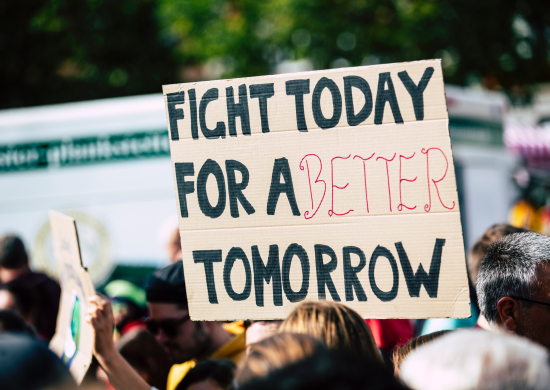World leaders are gathering in Kigali, Rwanda to make the biggest climate decision since December’s historic Paris Climate Agreement. Under the auspices of the Montreal Protocol—a 1989 treaty that phased out pollution that was eating a hole in Earth’s ozone layer—negotiators will consider phasing-down a class of factory-made coolants, referred to as hydrofluorocarbons, or HFCs.
The outcome of the Kigali negotiations is critical in the effort to control climate change because, paradoxically, HFCs are extremely powerful climate warmers–some thousands of times more powerful than carbon dioxide. That’s why leading scientists see phasing out HFCs as a key part of implementing the Paris plan.
Last month, momentum increased as over 100 nations and scores of national and international businesses called for an ambitious phase-down, while government and philanthropic donors committed $80 million to countries in need of technical assistance.
As important, the negotiations in Africa reflect a broader strategy to rein in climate change by bolstering carbon dioxide cuts with reductions of other planet-warming pollution. This strategy is based on a simple fact with major implications for mitigation efforts: carbon dioxide is not the only pollutant we have to control to meet our climate goals.
Make no mistake: the need to aggressively cut CO2 emissions is fundamental, irreplaceable and must be accelerated. But HFCs are one of a group of other pollutants—including methane and black carbon—that often have been overlooked despite their effects on public health and significant contribution to climate change. Like many HFCs, on a relative basis, pollutants like methane and black carbon are more potent warmers than carbon dioxide, earning them the label of climate “super pollutants.”
The attention that governments, businesses and civil society are giving the HFC phase-down is a major indicator that this dynamic has begun to change. Another key signal is the passage of super pollutant legislation in California—a climate policy bellwether. The new law, signed by Governor Edmund Brown on September 19, requires a 50 percent reduction in black carbon and a 40 percent reduction in methane and HFCs by 2030 (from 2013 levels).
This strategic evolution in the climate battle can make a crucial difference for people and nature. Since super pollutants are short-lived, meaning they stay in the atmosphere for anywhere from days to decades, reducing them affects the climate quickly too. That is why a strong HFC phase-down agreement in Kigali could cut global temperature by as much as a half a degree Celsius by the end of the century.
This may sound small. But remember that the goal set in Paris is to keep warming below 1.5 degrees Celsius overall to avoid the most dangerous impacts of climate change. In that context, it becomes clear why it’s powerful to couple accelerated action to cut carbon pollution with a full-court press on super pollutants like HFCs. In fact, without it, experts believe it’s unlikely we can keep climate change below 2 degrees Celsius.
A commitment to address climate super pollutants alongside carbon dioxide can do more than help us better control climate change. It can also yield immediate public health benefits.
For example, pollution from oil and gas development can contribute to smog that can trigger asthma attacks and other public health challenges. That is why scores of organizations are pressing the Environmental Protection Agency to expand recently-adopted rules that will control leaks of methane and other harmful chemicals from new oil and gas sources to the vast network of existing facilities.
An enormous leak from a Southern California gas storage facility last October provided a vivid example of why greater oversight is necessary. Before it was capped, the leak forced thousands of people out of their homes and spewed as much greenhouse gas pollution as the annual emissions of over half a million cars.
Another climate super pollutant, black carbon, also has serious air quality and resultant public health impacts globally. Significant reductions of black carbon and other fine particles from tailpipes and additional sources could contribute to preventing millions of premature deaths.
Given the momentous impact of climate change, we need to fully commit to broadening the fight by harnessing an important, evolving approach to drive mitigation efforts. Bolstering CO2 reductions with reductions of HFCs and other super pollutants gives the world the best chance of controlling climate change and protecting public health. It’s a smart, no-regrets strategy we can and must accelerate today.



